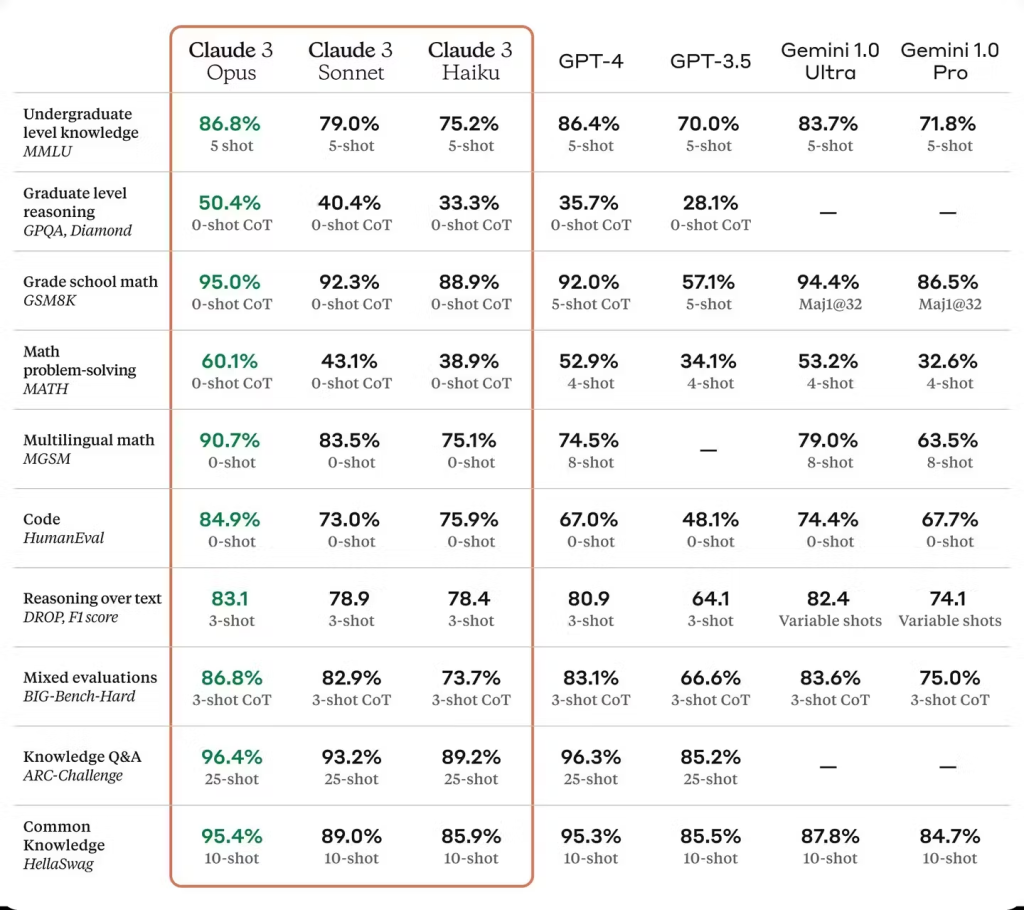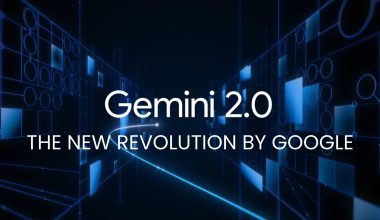Claude 3, developed by Anthropic, represents a significant leap in large language model technology; designed to be reliable, steerable, and interpretable [1]. With its variations – Haiku, Sonnet, and the most advanced, Opus – Claude 3 stands out in analyzing user inputs, generating human-like outputs, and surpassing existing models like GPT-4 in language understanding and problem-solving abilities [2]. Additionally, its foundation on principles such as the UN Declaration of Human Rights ensures alignment with human values from the start, making it a GPT4 alternative that is not only technologically advanced but also ethically grounded [4].
This claude 3 review explores the model’s capabilities, from the free-to-access claude ai chatbot powered by Sonnet to the subscription-based Opus model, which has been lauded for its unparalleled proficiency in various domains. As we delve into how developers have creatively leveraged Claude 3’s potential and compare it to other AI models, we highlight its real-world applications in business and development. With Anthropic AI’s focus on safety and AI alignment, Claude 3 paves the way for the future of AI development, integrating respect for disability rights and using a blend of diverse data sources for training [3].
Overview of Claude 3’s Capabilities
Claude 3’s capabilities span across a wide array of functionalities, making it a versatile tool for developers and businesses alike. Its models – Haiku, Sonnet, and Opus – each bring unique strengths to the table:
- Model Variants and Pricing:
- Haiku: Fastest, most compact model, ideal for quick responses. Priced at $1.25 per million tokens [3].
- Sonnet: Balances speed with intelligence, suitable for enterprise workloads. Costs $15 per million tokens [3].
- Opus: Most intelligent model, excels in complex problem-solving. $75 per million tokens [3].
- Haiku: Fastest, most compact model, ideal for quick responses. Priced at $1.25 per million tokens [3].
- Multimodal Capabilities and Performance:
- All models can process and reason over both text and image data, suitable for tasks involving charts, presentations, PDFs, and images alongside text.
- Opus demonstrates near-human levels of comprehension and fluency on complex tasks, with a twofold improvement in accuracy on challenging open-ended questions [3].
- All models can process and reason over both text and image data, suitable for tasks involving charts, presentations, PDFs, and images alongside text.
- Deployment and Use Cases:
- Claude 3 models are deployable across various tasks, including chatbots, auto-completion, and data extraction. Haiku stands out as the most cost-effective model for its intelligence category.
- These models can handle content creation, code generation, and conversations in multiple languages, showcasing their versatility and advanced performance across cognitive tasks.
- Claude 3 models are deployable across various tasks, including chatbots, auto-completion, and data extraction. Haiku stands out as the most cost-effective model for its intelligence category.
Developers’ Early Engagement and Creative Use Cases
Developers are finding Claude 3’s models to be pivotal in enhancing real-time interactions and automating complex tasks, demonstrating the versatility and power of Anthropic’s AI technology.
- Live Customer Interactions and Auto-completions:
- Claude 3 Haiku excels in providing near-instant responsiveness, making it ideal for customer service chats and content moderation where time is of the essence [3].
- Its ability to power live customer chats and auto-completion tasks supports businesses in maintaining high-quality, real-time interactions with users [3].
- Claude 3 Haiku excels in providing near-instant responsiveness, making it ideal for customer service chats and content moderation where time is of the essence [3].
- Task Automation and R&D:
- The Opus model, with its best-in-market performance, is being leveraged for highly complex tasks including R&D and strategic planning, offering a glimpse into the future of task automation [3].
- Its application ranges from data processing to sales enhancement, showcasing its potential to revolutionize time-saving tasks across industries [3].
- The Opus model, with its best-in-market performance, is being leveraged for highly complex tasks including R&D and strategic planning, offering a glimpse into the future of task automation [3].
- Performance and Cost Efficiency:
- Sonnet stands out for its strong performance at a lower cost, providing a balanced option for developers working on data processing and sales tasks [3].
- Early benchmarks on Anthropic’s website indicate promising performance across these models, though developers are advised to approach with a degree of skepticism.
- Sonnet stands out for its strong performance at a lower cost, providing a balanced option for developers working on data processing and sales tasks [3].
These insights into Claude 3’s deployment underscore its significant impact on developers’ approaches to project management and customer engagement, highlighting the model’s adaptability and efficiency.
Here are few tests conducted by developers:
Chess Puzzle Solution Test
Nat, a writer for The AI Observer, sent Claude 3 Opus a quick chess puzzle via a screenshot. The task was to figure out how to checkmate in just two moves. Nat even included the answer in a JSON file.
Claude 3 nailed it the first time, swiftly solving the puzzle. But when Nat removed the solution from the screenshot and asked Claude again, it couldn’t crack it.
Small experiment:
— Nat (@TheAIObserverX) March 22, 2024
1. I shared with Claude a screenshot of a simple mate-in-2 puzzle to solve.
2. The screenshot in the first video includes the solution as part of the JSON.
3. Claude quickly solved the puzzle. pic.twitter.com/7TYcd87EW0
This highlights Claude 3’s knack for learning and problem-solving, even with visual challenges. However, it also indicates that it could benefit from more up-to-date info in certain areas.
Prompt Engineering
The LangChain AI team created a cool way for Claude 3 to learn how to prompt itself. They set up a process where Claude 3 writes prompts, tests them, grades the responses, uses those grades to make the prompts better, and then repeats the whole thing.
To make it easier, they used LangSmith, a handy tool from LangChain AI. First, they gathered a bunch of test cases for the prompts. Then, they gave Claude 3 Opus an initial prompt from this collection. They looked at examples of what Claude 3 came up with, like tweets, and gave feedback on how good the prompts were. This feedback helped Claude 3 make its prompts better.
They kept doing this over and over to improve the quality of the prompts. Claude 3 did a great job following the steps and kept getting better each time. Big props to Claude 3 for being so smart and to LangChain AI for coming up with this method!
In a video from LangChain, they tried this approach with paper summaries on Twitter. They asked Claude 3 to summarize papers in a clear and engaging way. Claude 3 adjusted its summaries based on feedback and made more interesting summaries each time.
Comparing Claude 3 to Other AI Models
When comparing Claude 3 to other AI models, several key distinctions emerge, highlighting its unique position in the AI landscape:
- Performance and Intelligence:
- Claude 3 Opus showcases superior performance in reasoning, language understanding, coding, and writing, outperforming GPT-4 in these areas.
- Against Llama 2, Claude 3 models excel in both performance and context window, offering a broader and more efficient processing capability.
- In direct comparison with Gemini Ultra, Claude 3 Opus leads on as many as 10 AI benchmarks, demonstrating its advanced capabilities in a variety of tasks.
- Claude 3 Opus showcases superior performance in reasoning, language understanding, coding, and writing, outperforming GPT-4 in these areas.

- Speed and Affordability:
- Customization and Safety:
- Claude 3 is designed with safety as a priority, offering a straightforward start-up process but less flexibility in customization compared to other models [5].
- ZenoChat by TextCortex stands out for its customization capabilities, offering more features than both Claude 3 and GPT-4, indicating a trade-off between safety and flexibility.
- Claude 3 is designed with safety as a priority, offering a straightforward start-up process but less flexibility in customization compared to other models [5].
These comparisons elucidate Claude 3’s standing as a highly intelligent, albeit more expensive, option within the AI model spectrum, prioritizing performance and safety over speed and customization flexibility.
Real-world Applications of Claude 3 in Business and Development
In the realm of business and development, Claude 3’s real-world applications are revolutionizing how organizations interact with data and automate processes. With its enhanced capabilities, Claude 3 models offer a new level of efficiency and reliability:
- Risk Mitigation and Trustworthiness:
- Claude 3 models have been engineered to be significantly less likely to refuse answering prompts that challenge the system’s ethical guidelines, showcasing a balance between user engagement and safety protocols [3].
- Dedicated teams work tirelessly to track and mitigate a broad spectrum of risks, ensuring that Claude 3 remains a trustworthy tool for businesses and developers [3].
- Claude 3 models have been engineered to be significantly less likely to refuse answering prompts that challenge the system’s ethical guidelines, showcasing a balance between user engagement and safety protocols [3].
- Global Availability and Multimodal Support:
- Anthropic has made its AI tools available in 159 countries, indicating a global approach to AI deployment. The upcoming release of Haiku and its availability on Amazon Bedrock further extends its reach and accessibility.
- A groundbreaking feature of Claude 3 is its multimodal support, allowing users for the first time to analyze a variety of data types, including pictures, charts, and documents. This feature enhances the AI’s utility in diverse professional settings.
- Anthropic has made its AI tools available in 159 countries, indicating a global approach to AI deployment. The upcoming release of Haiku and its availability on Amazon Bedrock further extends its reach and accessibility.
- Enhanced Vision Capabilities:
- With advanced vision capabilities, Claude 3 can process not just textual information but also photos, charts, and diagrams. This ability opens up new avenues for businesses to leverage AI in interpreting visual data, making Claude 3 an indispensable tool for data analysis and decision-making processes.
These advancements underline Claude 3’s potential to streamline operations, enhance data analysis, and foster a safer, more efficient interaction between AI models and real-world applications.
Future Directions for Claude 3 and AI Development Trends
Looking ahead, the trajectory for Claude 3 and the broader landscape of AI development is marked by a series of strategic enhancements and broader accessibility initiatives. Key areas of focus include:
- Global Expansion and Accessibility:
- Despite the widespread availability of Claude 3 models in 159 countries, the Haiku model remains an exception. Efforts are underway to extend its reach, ensuring uniform access to all variants of Claude 3 [2].
- Anthropic’s commitment to making AI tools globally accessible is evident in its expansive deployment strategy, which aims to bridge the accessibility gap for the Haiku model [2].
- Despite the widespread availability of Claude 3 models in 159 countries, the Haiku model remains an exception. Efforts are underway to extend its reach, ensuring uniform access to all variants of Claude 3 [2].
- Safety and Trustworthiness Enhancements:
- A cornerstone of Claude 3’s design philosophy is its robust safety mechanisms. These include a leniency in responses within safety guardrails and a proactive stance on mitigating risks, including privacy concerns introduced by new modalities [3].
- Continuous improvements in these areas are anticipated, focusing on enhancing Claude 3’s reputation as a trustworthy and reliable AI model [3].
- A cornerstone of Claude 3’s design philosophy is its robust safety mechanisms. These include a leniency in responses within safety guardrails and a proactive stance on mitigating risks, including privacy concerns introduced by new modalities [3].
- Addressing Limitations and Expanding Affordability:
- While Claude 3 sets the benchmark in many aspects, it faces challenges in complex reasoning, mathematical problems, and biases in responses. Tackling these limitations is a priority for future updates.
- Recognizing the cost barrier, Anthropic plans to introduce more affordable versions of Claude 3, making it accessible to a broader audience without compromising on quality or safety.
- While Claude 3 sets the benchmark in many aspects, it faces challenges in complex reasoning, mathematical problems, and biases in responses. Tackling these limitations is a priority for future updates.
These directions not only signify Anthropic’s commitment to innovation and safety but also underscore the evolving nature of AI development, aiming for inclusivity, reliability, and continuous improvement.
Conclusion
Throughout this exploration of Claude 3 by Anthropic, we’ve delved into the nuances of its advanced capabilities, ethical design, and real-world applications that distinguish it in the competitive landscape of AI technology. The discussed models – Haiku, Sonnet, and Opus – illustrate the model’s versatility across different tasks, from complex problem-solving to multimodal data analysis, showcasing a groundbreaking leap in language model development. Moreover, the emphasis on ethical considerations, global accessibility, and safety measures reinforces Claude 3’s role in pushing the boundaries of what AI can achieve while aligning with human values and rights.
As we peek into the future of AI development and the trajectory of Claude 3, it’s evident that Anthropic is setting a benchmark for safety, reliability, and inclusivity in AI tools. The continued focus on addressing existing limitations, enhancing accessibility, and bolstering global deployments signifies a commitment to not only advancing technological prowess but also to fostering an AI-powered future that is ethically grounded and universally beneficial. As Claude 3 paves the way for next-generation AI models, its impact on businesses, developers, and the broader field of AI is poised to be profound and far-reaching, heralding a new era of innovation and application in the digital world.
FAQs
Q: How does Claude 3 compare to ChatGPT in terms of performance?
A: Claude 3, developed by Anthropic, has been found to outperform the GPT family of language models, which includes ChatGPT, in a variety of cognitive benchmark tests. In our evaluations, Claude 3 demonstrated greater articulation, providing responses that are generally better composed and more reader-friendly.
Q: What is the quality of Claude AI like?
A: Claude AI, the brainchild of Anthropic AI, is an intelligent chatbot powered by advanced language models. It excels in engaging in textual conversations with users and is considered highly capable in its interactions.
Q: Does Claude 3 Sonnet come with any costs?
A: Yes, Claude 3 Sonnet is a cost-effective option that offers a substantial context window for interactions. The pricing model is based on token usage, with input tokens priced at $3 per million and output tokens at $15 per million.


